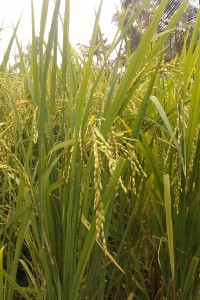 laying important similarities with domesticated rice, Australia’s wild rice offers tremendous potential for global food security, according to one of Australia’s leading plant geneticists.
laying important similarities with domesticated rice, Australia’s wild rice offers tremendous potential for global food security, according to one of Australia’s leading plant geneticists.“The Australian wild populations represent an invaluable source of diversity supporting rice food security,” said Professor Robert Henry, one of the researchers, from the University of Queensland’s Queensland Alliance for Agriculture and Food Innovation (QAAFI).
If rice, one of the world’s most important food crops, faced any new challenge, Professor Henry said ancient DNA found in Australian wild rice would be crucial to the industry’s defence.
“Australian wild rice could play a major role in future worldwide breeding programs that would improve disease and pest tolerance, reduce fertiliser needs, grow healthier crops and enhance food security,” Professor Henry said.
Research led by Professor Henry identified gaps they call ‘genome deserts’ in the inherited components or DNA of Australian wild rice.
The research paper, “Australian Wild Rice Reveals Pre-Domestication Origin of Polymormophism Deserts in Rice Genome” was published in the 6 June edition of online open access journal PLOS ONE.
The ‘genome deserts’, the researchers suggested, are evidence of one or more major selection events which occurred naturally in pre-historic times, well before domestication.
“Rice has been domesticated for several thousand years,” Professor Henry said. “Australian wild rice has been isolated from the impacts of domestication in Asia, so its genes still carry huge variation in many parts of the genome,” he said.
“Natural selection in the wild was not due to humans,” Professor Henry said.
According to the researchers, Australian wild rice has “enormous diversity” but there is still evidence of a major selection event happening, pre-domestication, probably millions of years ago.
The research was funded by the Australian Research Council, the Department of Science and Technology, Government of India under the BOYCAST Fellowship and the Indian Council for Agricultural Research.





